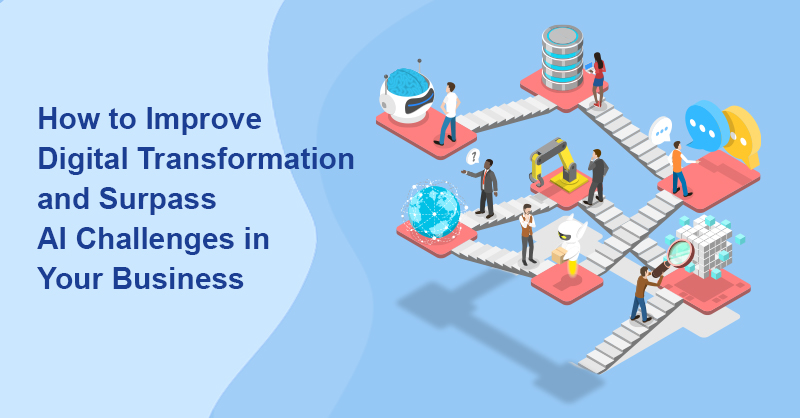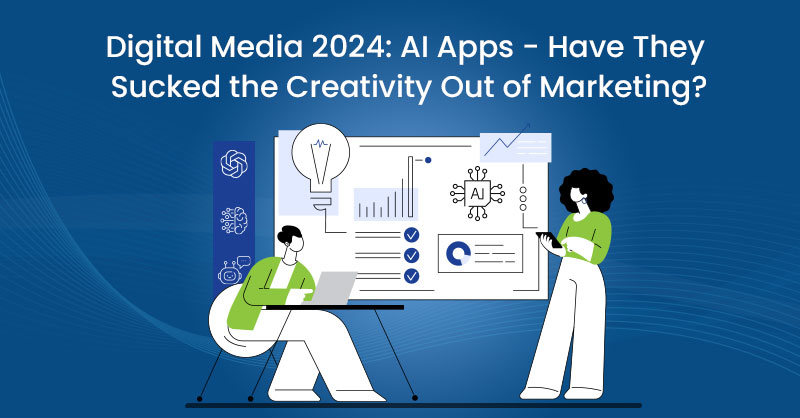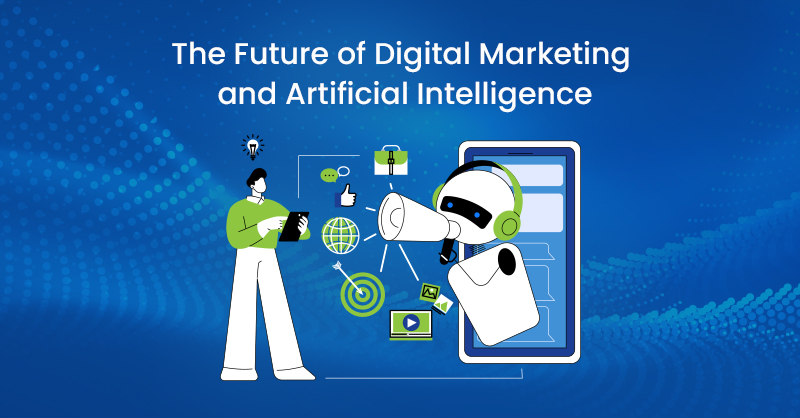Digital transformation has become a staple for organizations that are focused on improving efficiency and innovation in this highly competitive era.
Statistics indicate that the digital transformation market is showing exponential growth as many businesses have implemented a digital strategy or are considering going in that direction. While there has always been a need for businesses to digitize their processes, the COVID-19 pandemic can be credited with accelerating the adoption of digital transformation.
The challenges presented by the pandemic called for the rapid implementation of a digital strategy for business continuity.
However, adopting digital transformation isn’t without challenges. We explore different challenges that arise as businesses embark on the journey to digital transformation and integration of AI in core functions, as well as ways to improve digital transformation.
To overcome potential integration challenges, you will need to collaborate with your vendor to ensure that everyone understands the process. It will also necessitate that the vendor has broader expertise than just model building.
The risk of failure is reduced when AI implementation is done strategically and step by step. After successfully integrating AI into your system, you must still train people to use the model.
Focus on the Customers
Determining where to start with digital transformation and AI is always a challenge for many organizations. They narrow their focus to improving processes just to lower operational costs.
While this is equally important, every other business is doing the same, which doesn’t deliver a competitive edge.

Moreover, without a clear strategy, you will likely find it hard to create digital solutions that add significant business value and a higher ROI.
Improving your digital transformation efforts starts by putting the customers at the center of your efforts. Seek to understand your customers’ needs as well as how you can improve their overall experience at every touch point.
Implementing customer-centric strategies and attractive website design in order to keep up with the current trends and customer behaviour can be a guide on what technologies to invest in to improve overall performance.
Get Management Buy-in
Change often comes with resistance from all corners. It is common for top management to resist digital transformation and AI integration, especially where they feel that the organization is working just fine.
Moreover, the lack of certainty regarding ROI and leaders wanting to maintain the status quo makes it hard to convince the stakeholders, which derails the process. Additionally, failure to embrace change from the top trickles down to the entire organization, crippling the efforts further.
The top management has a task to uphold the company goals, which involves understanding that growth comes with change.
Moreover, you have to build a digital case by demonstrating ROI, staying on budget, reporting progress, and having clear communication. In addition, work on improving change management, particularly from the top.
Break Down Data Silos
Successful integration of AI in business activities requires the availability of high-quality sets of data. Organizations receive varieties of data flows, both structured and unstructured. Accessing quality data and identifying which data to use to improve AI systems' learning process and enhance decision-making is often challenging.
Breaking down data silos is key to availing quality data across the entire organization, which leads to better data analysis. Moreover, identifying the appropriate tools for data analysis helps with performing analytics that leads to better decisions.
For instance, using knowledge graphs for machine learning can help improve data access and information retrieval, as well as make sense of data relationships of the data assets to make informed recommendations.
Integrating AI into your existing systems is a more complex procedure than trying to install a browser plugin. The interface and elements required to address your business's needs must be established.
Certain rules are hard-coded. We must consider data infrastructure requirements, data storage, labelling, and feeding data into the system.
Find the Right Technology
Integrating AI and automation into operations calls for a robust technological infrastructure with impeccable processing abilities. However, overhauling the technological landscape can be expensive, which poses a challenge for many organizations.
The success of a digital transition strategy significantly depends on finding the right technology. For example, you can use different tools that make your job easier based on your needs. A great example is the telegram spy app in case you need tracking on your phone.
Moreover, you can stay on budget by avoiding investing in unnecessary technologies that don’t add any value. Start by identifying your organization’s technological needs. It is also important to test technologies for suitability before implementation.
Additionally, focus on customization of the end-user experience.

Any AI system requires data as a component; therefore, before you start using data for your machine learning models, it's crucial to understand the problems associated with data, namely those related to quantity, quality, relevance, and regulatory compliance.
There are many free public data sets available for ML and AI experiments, but you should never train your production systems with them.
Make Cultural Adjustments
As said earlier, digital transition faces a lot of resistance. Besides the top management, organizations face challenges from employees who are not open to embracing new technologies in the workplace. This often sprouts from a lack of an innovative culture.
If you are to improve digital transformation in your organization, creating a culture of adaptability and innovation is essential.
This is a culture that cultivates creative thinking and an open mind to experiment with different strategies for better performance.
Organizations can profit financially and culturally from artificial intelligence. Teams that use AI systems can work together more productively and with greater pride, increasing their overall strength. AI systems can help them in so many ways. They help make proper decisions and bring good outcomes thanks to image annotation for visual data. These cultural advantages can go deep into corporate operations, enhancing the presumptions that guide organizational behaviour and assuring the pursuit of more insightful objectives.
Conclusion
In this era of fierce competition, digital transformation is no longer optional but necessary. It is important to stay ahead of the curve and enhancing customer experiences. However, organizations face numerous challenges in their endeavours.
Making a cultural shift, investing in the right technology, breaking down data silos, putting the customer at the center, and improving management can help overcome some of the challenges.
Awareness of organizational vulnerability is at the core of digital transformation initiatives. Leaders understand that innovation and change are necessary to adapt to and compete in a global, digital environment. But more people than ever are unaware of how quickly technology is evolving.
Being flexible means having no fear of changing course. It entails embracing chances when they present themselves. Lean into this even though the mere fact that you're undergoing a digital transition already demonstrates how agile you are.
Don't be hesitant to replace outdated techniques with new ones or to use new processes and tools.







on
This knowledge regarding enhancing digital transformation was excellent. I really enjoyed the information you gave.
on
Thanks a lot, sir for sharing with us an amazing and precious article with us, and we are really thankful to you.